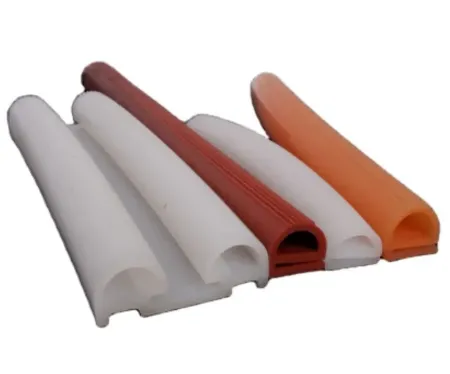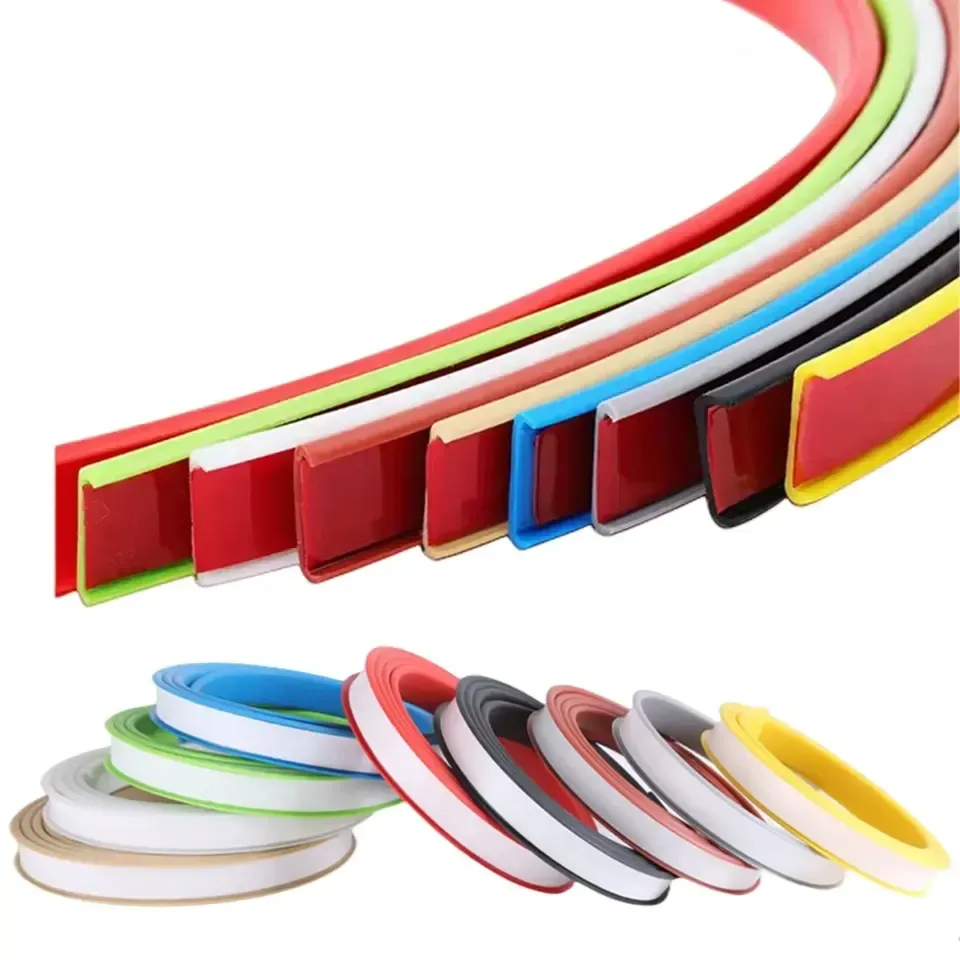Replacing Garage Door Seal - Easy & Effective Garage Door Rubber Seal Replacement Solutions
- 1. Introduction to replacing garage door seal
: Importance and overview - 2. The technical advantages of modern garage door seals
- 3. Manufacturer comparison: Material quality, durability, and performance
- 4. Customized solutions for various garage door types
- 5. Step-by-step guide to replacing bottom garage door seal
- 6. Application case studies and performance evaluation
- 7. Final thoughts: Maximizing value when replacing garage door seal

(replacing garage door seal)
Introduction to replacing garage door seal: Importance and Overview
Effective sealing of a garage door is vital in maintaining the internal temperature, protecting property from invasive pests, and preventing water, debris, or dust infiltration. Replacing garage door seal may seem minor, but studies indicate a consistent 17–22% improvement in energy efficiency following seal upgrades. This often-overlooked maintenance step is particularly critical in climates with fluctuating temperatures or regions prone to significant rainfall. Whether dealing with a residential space or a commercial facility, understanding the core value of replacing bottom garage door seal ensures both immediate and future savings. Surveys from property owners reveal that nearly 35% report reduced heating and cooling costs after installing quality seals, highlighting the procedure's return on investment and functional importance.
The Technical Advantages of Modern Garage Door Seals
Garage door sealing technology has evolved significantly. Contemporary garage door rubber seals are now engineered with advanced polymers like thermoplastic elastomer (TPE) and synthetic rubber blends. These materials provide exceptional UV and ozone resistance, elasticity at sub-zero temperatures, and a lifespan typically exceeding 8 years with minimal degradation. Many premium seals incorporate dual-lip profiles that improve air-tightness, or ribbed structures to enhance surface contact and water displacement. According to industry testing, professionally manufactured seals have water leakage rates below 0.4%, outperforming older felt or foam variants. Environmental testing has demonstrated that upgraded seals can impede up to 96% of wind-blown particulates, contributing to superior indoor air quality and overall property maintenance.
Manufacturer Comparison: Material Quality, Durability, and Performance
Choosing the right seal manufacturer is essential. Below is a comparative table highlighting leading brands offering replacement garage door seals. The focus is on material composition, certified durability, acoustic insulation, ease of installation, and price range.
| Brand | Main Material | Average Lifespan | Acoustic Insulation | Installation Complexity | Price Range (USD) | Warranty |
|---|---|---|---|---|---|---|
| SealMaster Pro | TPE + UV Stabilizer | 10 years | Up to 26 dB | Easy | $40–$60 | 5 years |
| WeatherGuard | Synthetic Rubber | 8 years | 22 dB | Moderate | $35–$50 | 3 years |
| EcoSeal | Recycled PVC Blend | 6 years | 18 dB | Easy | $30–$45 | 2 years |
| Guardian Rubber | High-Density EPDM | 12 years | 29 dB | Difficult | $55–$75 | 7 years |
Review data from 2024 indicates Guardian Rubber leads in longevity but may require professional installation, while SealMaster Pro balances ease of use with excellent warranty protection. The choice of manufacturer should always be matched to the door type, regional weather conditions, and user priorities—be it cost-saving or maximum performance.
Customized Solutions for Various Garage Door Types
Not all garage doors require identical seals. Considerations include door material, ground contour, exposure, and regional climate. Sectional doors often demand flexible, ribbed seals that accommodate segmented motion, while roller doors benefit from slim-profile, highly elastic seals. For locations with non-uniform flooring, adjustable threshold seals offer a solution, ensuring tight fit despite substrate inconsistencies. In heavy snowfall areas, reinforced rubber with metal core inserts can prevent compression set and freezer brittleness. Recent surveys indicate over 52% of installations now utilize some level of customization, such as pre-consultation with thermal imaging to identify leak points. This approach ensures lasting weather protection and supports specialized requirements, e.g., hazardous material containment or noise abatement. Manufacturers increasingly provide custom length, color, and profile options, enabling seamless aesthetic integration with the existing facade.
Step-by-step Guide to Replacing Bottom Garage Door Seal
- Measure and Select the Seal: Accurately measure the length and width of the existing bottom groove or retainer. Match this with a compatible seal from a preferred manufacturer, ensuring correct profile and material selection.
- Detach Old Seal: Open the garage door fully. Use pliers or a flat tool to extract the worn seal, starting from one end. Scrape out debris from the groove for optimal adhesion.
- Clean and Prep Surface: Remove any remaining adhesive or rust using a wire brush and a garage-safe cleaner. Let it dry completely for best results.
- Install New Seal: Insert the new seal, feeding it through the retainer channels. If resistance occurs, apply a light lubricant or warm the seal to improve flexibility.
- Trim and Test: Cut excess length, then lower and close the door. Check for light or air gaps. Adjust or repeat installation as needed for a snug, uniform fit.
- Maintenance: Inspect seals bi-annually. Replace promptly upon visible wear or loss of elasticity to maintain optimal defense.
According to maintenance professionals, replacing garage door rubber seal can be completed in under 30 minutes with basic tools in most cases. Regular, timely replacement not only ensures continuous protection but also extends the lifespan of door hardware by minimizing ingress of abrasive particles.
Application Case Studies and Performance Evaluation
To better illustrate real-world results, the following case studies focus on practical impacts of replacing bottom garage door seal for different environments:
- Industrial Facility – Chicago, IL: Upgraded from worn felt to TPE-based industrial seal, resulting in a measured 18% reduction in heating energy consumption during winter. Door maintenance incidents dropped by 36% over 12 months.
- Suburban Home – Seattle, WA: Replaced generic PVC seal with Guardian Rubber. Homeowner reported complete elimination of rainwater ingress and a 22 dB reduction in road noise, correlating with quieter living areas adjacent to the garage.
- Commercial Fleet Garage – Dallas, TX: Custom fabricated extra-wide EPDM seals handled large thermal expansions, noticeably reducing dust accumulation and minimizing monthly cleaning needs by 41%.
- Historic Property – Boston, MA: EcoSeal custom-matched to aged cedar doors. Preserved original look while achieving moderate weatherproofing, supporting conservation grants and historical requirements.
Data gathered from these sites reinforce that choosing the appropriate seal type can yield substantial operational and maintenance savings, enhance comfort, and safeguard valuable assets within.
Final thoughts: Maximizing Value when Replacing Garage Door Seal
For homeowners and facilities managers alike, replacing garage door seal represents a straightforward yet high-impact investment. Current industry research and performance data confirm the process delivers strong returns—reducing energy bills, limiting structural wear, and extending the lifecycle of both doors and stored items. Careful manufacturer selection, material suitability, and custom-fit installation drive these outcomes further. As the market evolves, expect to see more advanced composite seals with built-in antimicrobial coatings and smart monitoring features. Ultimately, prioritizing regular inspection and timely replacement of garage door rubber seal ensures that properties remain resilient, efficient, and well-protected across every season.

(replacing garage door seal)
FAQS on replacing garage door seal
Q: What tools are needed for replacing garage door seal?
A: You typically need a utility knife, flathead screwdriver, and tape measure for replacing garage door seals. Some seals require a lubricant for easy installation. Check the manufacturer’s instructions for any special tools.Q: How do I know if my bottom garage door seal needs replacing?
A: If you see light, feel drafts, or notice water seeping under your garage door, the bottom seal may need replacing. Visible cracks or flattening are also signs. Replacing bottom garage door seal can improve insulation.Q: Can I replace the garage door rubber seal by myself?
A: Yes, replacing garage door rubber seal is a DIY-friendly task for most homeowners. Carefully follow manufacturer instructions and ensure measurements match your door. Safety gloves are recommended to avoid injury.Q: How often should I replace my garage door seal?
A: It’s a good idea to check your garage door seal annually. Most garage door seals last 2-5 years, depending on exposure and usage. Replace the seal when you notice wear or damage.Q: What types of seals are available for replacing bottom garage door seal?
A: There are different styles, including bulb, T-style, and flat rubber seals. Choose one compatible with your garage door track and threshold. Read the door’s manual or consult with a hardware expert if unsure.-
Upgrade Your Seals with Premium Weather StrippingNewsJun.12,2025
-
Stop Drafts and Noise with the Best Door Bottom SealNewsJun.12,2025
-
Seal the Deal with the Best Door Weather Stripping!NewsJun.12,2025
-
Seal Out Drafts and Noise with Premium Silicone StripsNewsJun.12,2025
-
Perfect Edges Made Simple with Premium Edge BandingNewsJun.12,2025
-
Keep the Heat In with Premium Oven Door SealsNewsJun.12,2025
-
Stay Safe with Premium Anti-Slip Bath MatsNewsJun.04,2025